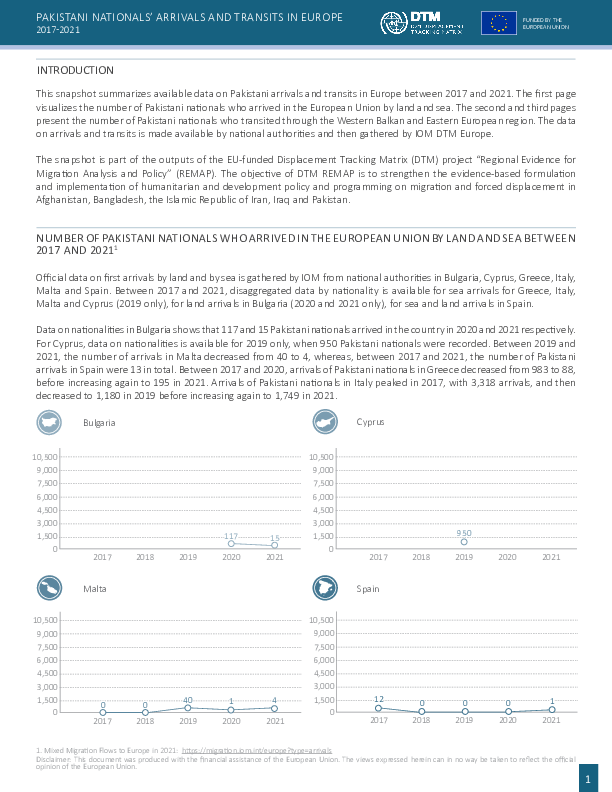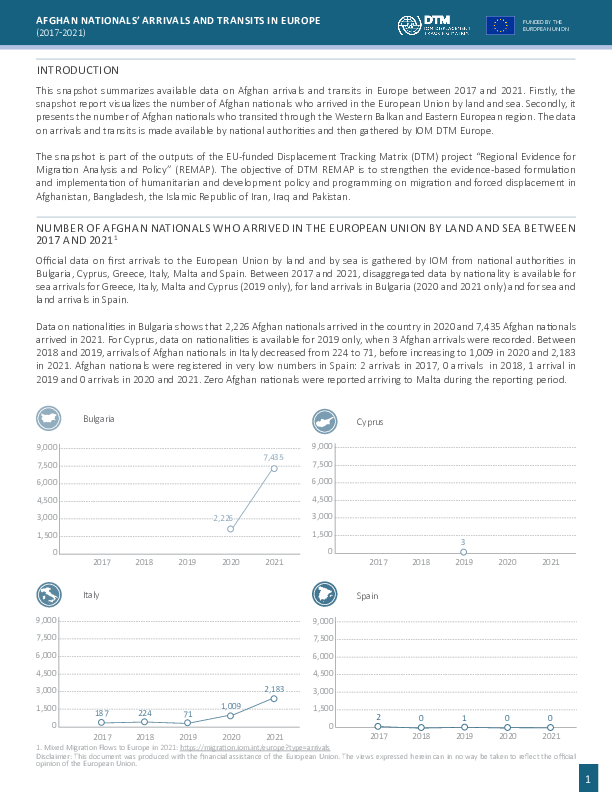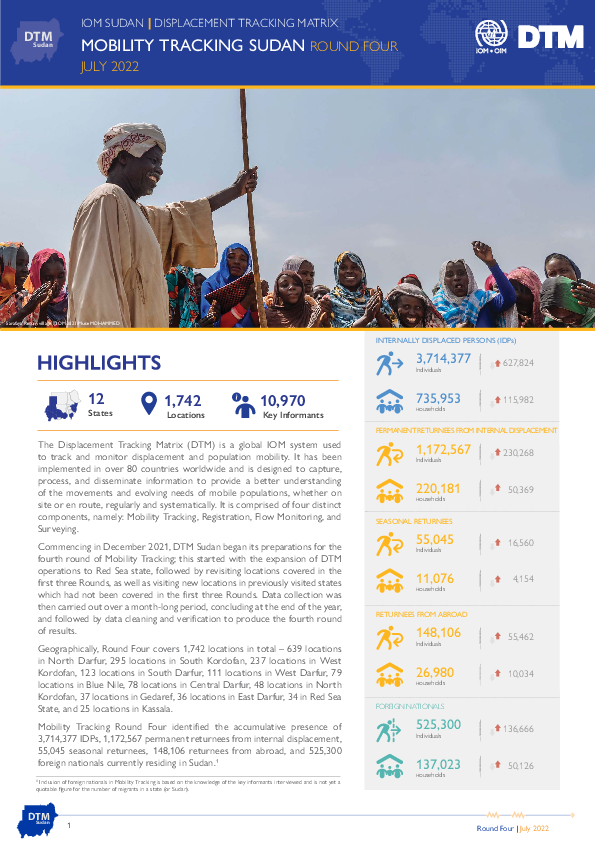-
Countries
-
Data and Analysis
-
Special Focus
-
Crisis Responses
The Central African Republic, which has experienced continuous volatility for the past two decades, has been riddled by a crisis which ignited in 2012 with a violent takeover of power and has developed into a complex protracted state of permanent insecurity and fragility which has spilled over into neighbouring countries. The crisis has led to the death of an estimated 506 people in 2022 (as of 30 April) and triggered significant displacement of populations in the seven affected countries. The crisis is characterized by power struggles amongst elites, the absence of state institutions and public investment, religious and ethnic tensions and disputes for the control of key resources.
As of 30 June 2022, 3,305,503 individuals were displaced, including 602,134 Internally Displaced Persons (18% of the displaced population), 1,588,289 Returnees (former IDPs) (48%), 377,287 Returnees from abroad (11%) and 737,793 Refugees in neighbouring countries (22%). In the Central African Republic, the largest displaced population consists of Former IDP Returnees (62%), while IDPs represent 23 per cent of the displaced population present in the country and Returnees from abroad represent 15 per cent of in-country displaced people. Refugees from the Central African Republic are primarily hosted by Cameroon (345,798 individuals, or 47% of refugees), the Democratic Republic of the Congo (209,495 individuals, or 29% of refugees) and Chad (122,958 individuals, or 17% of refugees).
The Central Sahel area, and in particular the Liptako Gourma region, which borders Burkina Faso, Mali and Niger, is affected by a complex crisis involving growing competition over dwindling resources; climatic variability; demographic pressure; high levels of poverty; disaffection and a lack of livelihood opportunities; communal tensions; the absence of state institutions and basic services; and violence related to organized crime and Non-State Armed Groups. The crisis has led to the death of an estimated 5,000 people in 2021 (as of 31 December) and triggered significant displacement of populations in the four affected countries.
As of 30 June 2022, 2,641,477 individuals have been displaced, including 2,437,354 Internally Displaced Persons (92% of the displaced population) and 204,123 Refugees (8% of the displaced population). Seventy-three per cent of the displaced population (1,902,150 individuals) were located in Burkina Faso, while 15 per cent resided in Mali (406,184 individuals), 8 per cent in Niger (223,304 individuals) and 3 per cent in Mauritania (85,083 individuals).
La région du Sahel central, et plus particulièrement la zone du Liptako Gourma, qui enjambe le Burkina Faso, le Mali et le Niger, est témoin d’une crise complexe qui comprend comme enjeux une compétition grandissante pour le contrôle de ressources; des bouleversements climatiques; une croissance démographique galopante; des niveaux élevés de pauvreté; l’absence d’opportunités économiques et un sentiment de désillusions quant au futur; des tensions communautaires; l’absence de présence étatique et le manque de services sociaux de base; et des violences provoquées par des réseaux de crime organisé et des groups armés non étatiques. La crise a engendré, en 2021, la mort de 5 000 personnes (au 31 décembre) et conduit à des déplacements de populations significatifs dans les quatre pays touches par la crise.
Au 30 juin 2022, 2 641 477 individus étaient déplacés par la crise, y compris 2 437 354 Personnes déplacées internes (92% de la population affectée) et 204 123 réfugiés (8%). treize pour cent de la population déplacée (1 875 049 personnes) au Burkina Faso, 16 pour cent au Mali (406 184), 8 pour cent au Niger (198 362) et 3 pourcent en Mauritanie (85 083).
La crise dans le Bassin du lac Tchad est le résultat d’une combinaison complexe d’une multitude de facteurs, y compris un conflit armé impliquant des groups armés non étatiques, des niveaux extrêmes de pauvreté, un sous-développement persistent, et des bouleversements climatiques, qui ont conduit à des déplacements de populations importants. Au 30 juin 2022, le Cameroun, le Tchad, le Nigeria et le Niger accueillaient 5 595 800 individus affectés par la crise, dont des Personnes déplacées internes (PDI), des réfugiés et des retournés (anciennes PDI et retournés de l’étranger). 75 pour cent d’entre eux (soit 4 180 954 personnes) se trouvaient au Nigéria, 11 pour cent au Cameroun (638 647 personnes), 9 pour cent au Tchad (490 058 personnes) et 4 pour cent au Niger (286 141 personnes).
The crisis currently affecting the Lake Chad Basin states results from a complex combination of factors, including conflict with Non-State Armed Groups, extreme poverty, underdevelopment and a changing climate, which together have triggered significant displacement of populations. As of 30 June 2022, Cameroon, Chad, Niger and Nigeria were hosting an estimated 5,595,800 affected individuals made up of Internally Displaced Persons (IDPs), Refugees (both in- and out-of-camp), Returnees (Former IDPs and Returnees from abroad) and Third Country Nationals (TCNs). 75 per cent of the affected population (representing 4,180,954 individuals) were located in Nigeria, while 11 per cent resided in Cameroon (638,647 individuals), 9 per cent in Chad (490,058 individuals) and 4 per cent in Niger (286,141 individuals).

Contact
iomisbdtmremapteam@iom.int
Language
English
Location
Pakistan
Period Covered
Jan 01 2017
Dec 31 2021
Activity
- Other
This snapshot summarizes available data on Pakistani arrivals and transits in Europe between 2017 and 2021. The first page visualizes the number of Pakistani nationals who arrived in the European Union by land and sea. The second and third pages present the number of Pakistani nationals who transited through the Western Balkan and Eastern European region. The data on arrivals and transits is made available by national authorities and then gathered by IOM DTM Europe. The snapshot is part of the outputs of the EU-funded Displacement Tracking Matrix (DTM) project “Regional Evidence for Migration Analysis and Policy” (REMAP). The objective of DTM REMAP is to strengthen the evidence-based formulation and implementation of humanitarian and development policy and programming on migration and forced displacement in Afghanistan, Bangladesh, the Islamic Republic of Iran, Iraq and Pakistan.

Contact
DTMAfghanistan@iom.int
Language
English
Location
Afghanistan
Period Covered
Jan 01 2017
Dec 31 2021
Activity
- Other
This snapshot summarizes available data on Afghan arrivals and transits in Europe between 2017 and 2021. Firstly, the snapshot report visualizes the number of Afghan nationals who arrived in the European Union by land and sea. Secondly, it presents the number of Afghan nationals who transited through the Western Balkan and Eastern European region. The data on arrivals and transits is made available by national authorities and then gathered by IOM DTM Europe. The snapshot is part of the outputs of the EU-funded Displacement Tracking Matrix (DTM) project “Regional Evidence for Migration Analysis and Policy” (REMAP). The objective of DTM REMAP is to strengthen the evidence-based formulation and implementation of humanitarian and development policy and programming on migration and forced displacement in Afghanistan, Bangladesh, the Islamic Republic of Iran, Iraq and Pakistan.

Contact
Iompretoria2@iom.int
Language
English
Location
South Africa
Period Covered
Jun 13 2022
Jun 17 2022
Activity
- Baseline Assessment
On 11-13 April, severe flooding and landslides caused by heavy rainfall affected southern and south-eastern South Africa, particularly the provinces of KwaZulu-Natal and Eastern Cape. According to national authorities, at least 123,808 people were affected, 448 people died and over 30,000 are displaced, mostly in collective evacuation centres. The devastation in the most affected areas of KwaZulu-Natal and Eastern Cape provinces is immense: nearly 12,500 homes have been destroyed or damaged, 66 health centres affected, and 600 schools devastated which will put 270,000 students at risk. A National State of Disaster has been declared in response to the floods and landslides, and rescue teams have been deployed to the affected areas to provide humanitarian assistance to those most affected.
To better assist authorities and partners to respond to the situation, IOM in partnership with the South Africa Red Cross Society and in coordination with provincial and local authorities, deployed teams from 13 to 17 June to conduct baseline assessments at ward level. These assessments provide a snapshot of the number of displaced persons residing in 26 of the most affected wards in Ethekwini district. The assessments also provide an overview of the sectoral needs, gaps and potential solutions, including water and sanitation (WASH), food security, health, infrastructure and protection. Finally, a list of priority locations for further assessment were identified.

Contact
DTM Sudan, DTMSudan@iom.int
Language
English
Location
Sudan
Period Covered
Dec 13 2021
Jan 13 2022
Activity
- Mobility Tracking
- Baseline Assessment
The Displacement Tracking Matrix (DTM) is a global IOM system used to track and monitor displacement and population mobility. It has been implemented in over 80 countries worldwide and is designed to capture, process, and disseminate information to provide a better understanding of the movements and evolving needs of mobile populations, whether on site or en route, regularly and systematically. It is comprised of four distinct components, namely: Mobility Tracking, Registration, Flow Monitoring, and Surveying.
Commencing in December 2021, DTM Sudan began its preparations for the fourth round of Mobility Tracking; this started with the expansion of DTM operations to Red Sea state, followed by revisiting locations covered in the first three Rounds, as well as visiting new locations in previously visited states which had not been covered in the first three Rounds. Data collection was then carried out over a month-long period, concluding at the end of the year, and followed by data cleaning and verification to produce the fourth round of results.
Geographically, Round Four covers 1,742 locations in total – 639 locations in North Darfur, 295 locations in South Kordofan, 237 locations in West Kordofan, 123 locations in South Darfur, 111 locations in West Darfur, 79 locations in Blue Nile, 78 locations in Central Darfur, 48 locations in North Kordofan, 37 locations in Gedaref, 36 locations in East Darfur, 34 in Red Sea State, and 25 locations in Kassala.
Mobility Tracking Round Four identified the accumulative presence of 3,714,377 IDPs, 1,172,567 permanent returnees from internal displacement, 55,045 seasonal returnees, 148,106 returnees from abroad, and 525,300 foreign nationals currently residing in Sudan.
Contact
DTM Libya, DTMLibya@iom.int
Language
English
Location
Libya
Period Covered
Jun 01 2022
Jun 30 2022
Activity
- Mobility Tracking
- Site Assessment
Detention Centre Profiling is a component of IOM Libya’s Displacement Matrix programme. It is a data oriented tool that routinely provides specific sex and age demographic data and key sectoral information on individuals held in Libya’s detention centres on the date of assessment.





